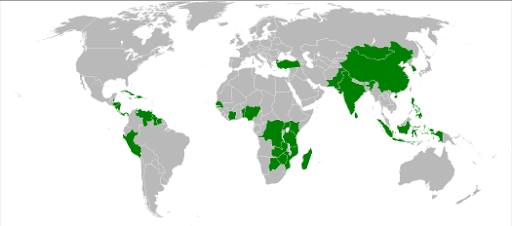Agreement on Agriculture
Background
-
- India has been a founding member of the World Trade Organization (WTO) and is a signatory to the multilateral Agreement on Agriculture (AoA), which, among other things, regulates domestic subsidies granted by governments in the agricultural sector.
- The implementation of the Agreement on Agriculture started with effect from 1.1.1995.
- WTO members had first negotiated these commitments at the Uruguay Round of negotiations (1986 to 1993), and have since discussed issues arising from these commitments at subsequent ministerial conferences and committee meetings at the WTO.
About AoA
- It aims to curb trade distorting aid, which, despite being granted domestically, adversely affects the competitiveness of the global market.
- Under this agreement, subsidies are categorised into the following categories on the basis of their trade distorting nature.
- Amber Box: These subsidies have a potentially damaging effect on trade and distort the relevant market. They need to be gradually reduced to ensure compliance with global norms. These supports are subject to limits: “de minimis” minimal supports are allowed (generally 5% of agricultural production for developed countries, 10% for developing countries);
- Green Box: Agriculture-related subsidies that fit in WTO’s green box are policies that are not restricted by the trade agreement because they are not considered trade distorting. To qualify for the green box, WTO says a subsidy must not distort trade, or at most cause minimal distortion.
- Blue Box: This is the “amber box with conditions” — conditions designed to reduce distortion. Any support that would normally be in the amber box, is placed in the blue box if the support also requires farmers to limit production by imposing production quotas. At present there are no limits on spending on blue box subsidies.
What is the Peace Clause?
- The “Peace Clause” was accepted at the Bali Ministerial meeting of WTO in 2013, where WTO members agreed temporarily to not challenge a developing country’s domestic support programs that exceed their agreed-to limits, if the support was in the form of stocks for food security purposes.
- There are other conditions that must be met, including that the programs must not distort trade.
- In 2020, India invoked the Peace Clause for exceeding the ceiling on support it can offer farmers for rice for the marketing year 2018-2019, marking the first time any country has taken recourse to this safeguard.
Why in News?
- Commerce Minister Piyush Goyal, while addressing the informal ministerial meeting of a group of 33 countries (G-33), remarked that the Agreement on Agriculture at the World Trade Organization is riddled with imbalances and tilted against developing countries.
India in WTO debates
- Food and livelihood security, particularly India’s public stockholding programme and MSP, have been hotly debated at the WTO between the developed and developing blocs. The US and Canada have been opponents of India’s food security and domestic support programmes.
- India’s Minimum Support Price (MSP) measure would fall in the Amber Box category and would thus have to be capped at 10 per cent of the total value of the concerned product as required under the AoA. If India’s domestic support exceeds the permissible limit, it would stand in violation of this agreement.
- India has, however, consistently defended its position on this issue and emphasised the need to prioritise the food and livelihood security of its population. A joint proposal by China and India at the WTO highlighted the vast difference in the value of subsidies granted by developed economies like the US, EU, and Canada, and those granted by developing economies.
- The genesis of the problem lies in the skewed nature of the AoA. Nearly all the rich countries’ subsidies fall into the green box while those of developing nations are mostly in the amber box.
- For eg: The U.S. has shifted most of its farm subsidies (88 per cent) into the green box. This has enabled the world’s largest trading nation to increase its farm subsidies from around $61 billion in 1995 to $139 billion in 2015.
- Developed countries have been subsidising its corporate agriculture to capture global markets while it targets the subsidies India gives to an overwhelmingly large share of small and marginal farmers.
G33 countries
- The G33 is a forum of developing countries including India, Brazil, South Africa etc. formed during the Cancun ministerial conference (2003) of the WTO, to protect the interest of the developing countries in agricultural trade negotiations.
- It was created in order to help group countries which were all facing similar problems. The G33 has proposed special rules for developing countries at WTO negotiations, like allowing them to continue to restrict access to their agricultural markets.
- The group, despite its name, has 47 members currently.

Reference:
- https://www.hindustantimes.com/opinion/the-wto-threat-to-indian-agriculture-s-msp-regime-101632226872808-amp.html
Subscribe
Login
0 Comments
